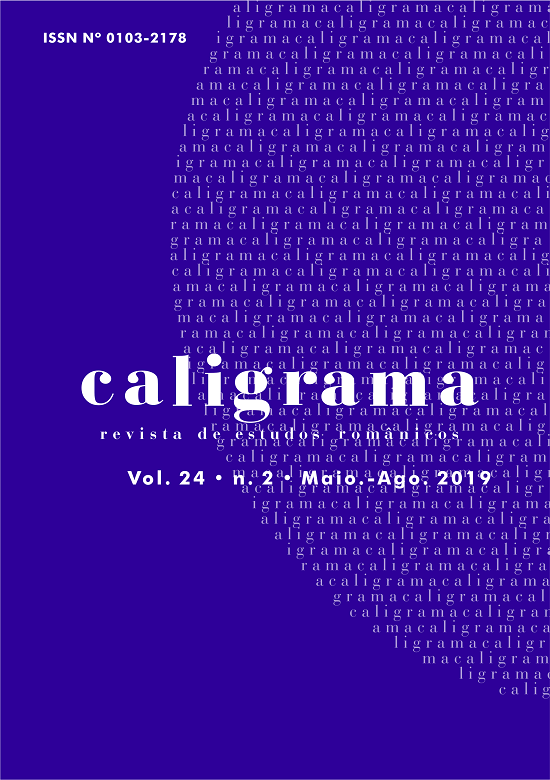Perfil da negação pós-verbal entre jovens sulistas: dados do ALiB / Post-Verbal Negation in Young Southern Speakers: Data from ALiB
DOI:
https://doi.org/10.17851/2238-3824.24.2.163-192Keywords:
negação sentencial, dialeto sulista, sintaxe, semântica, dialetologia, sentential negation, southern dialect, syntax, semantics, dialectology.Abstract
Resumo: Este trabalho conjuga preocupações sintáticas e discursivas com questões geolinguísticas. Descreve a negação no Sul do Brasil, em comparação com as propriedades identificadas nos dialetos do Nordeste/Sudeste e de Portugal (CAVALCANTE, 2007, 2012). A literatura anterior considerava (i) sentenças com [não VP não] e [VP não] como inovações do português brasileiro (PB) em relação ao europeu (PE), oriundas de contato linguístico (FONSECA, 2011; CARENO; PETTER, 1994; LUCCHESI, 2001); (ii) e [VP não] como peculiaridade nordestina, ausente no Sul/Sudeste. Trabalhos mais recentes mostram negativas pós-verbais no PE, embora com valores distintos (MARTINS, 2010; CAVALCANTE, 2012, p. 57-60; LAMBERTI, 2014); atestam [não VP não] no Sul/Sudeste e [VP não] no Sudeste (CAMARGOS, 2000; ALKMIM, 1999; 2002). Mas a distribuição e o valor de [VP não] no Sul não estão claros: a estrutura parece ausente do Rio Grande do Sul (RS) (GOLDNADEL et al., 2013), mas ao menos parcialmente presente no Paraná (PR) e Santa Catarina (SC) (cf. FONSECA, 2009). O trabalho busca mapear essas estruturas nos inquéritos do ALiB da região Sul, para detectar onde aparecem e descrever as funções discursivas e os tipos sintático-semânticos que codificam. Busca verificar as hipóteses: (i) [VP não] está ausente no RS; (ii) mas presente em partes de SC e PR; (iii) quando ocorre, a estrutura [não VP não] tem valor enfático, como no PE, ou apenas anafórico, como no Nordeste e Sudeste (CAVALCANTE, 2012, p. 28-133); (iv) o ‘não’ pós-verbal é restrito a declarativas matrizes como no PE ou ocorre em outros tipos oracionais.
Palavras-chave: negação sentencial; dialeto sulista; sintaxe; semântica; dialetologia.
Abstract: This paper combines syntactic-pragmatic concerns and dialectal issues. It describes sentential negation in southern Brazil, in comparison with properties identified in Northeast/Southeast dialects and in Portugal (CAVALCANTE, 2007, 2012). Previous literature on the phenomenon considered (i) sentences with [neg VP neg] and [VP neg] as innovations in Brazilian Portuguese (BP), originating from linguistic contact (FONSECA, 2011; CARENO; PETTER, 1994; LUCCHESI, 2001), absent in European Portuguese (EP); (ii) and [VP neg] as a northeastern peculiarity, absent in the south/southeast Brazil. However, later works attested (a) post-verbal negatives in EP, although with different values (MARTINS, 2010; CAVALCANTE, 2012, p. 57-60; LAMBERTI, 2014); (b) and [not VP not] in the south/southeast; (c) and [VP not] in the southeast (CAMARGOS, 2000; ALKMIM, 1999; 2002). Conversely, the distribution and value of [VP neg] in the southern region are not clear: this structure seems to be absent in the state of Rio Grande do Sul (RS) (GOLDNADEL et al., 2013), but at least partially present in Paraná (PR) and Santa Catarina (SC) (FONSECA, 2009). This paper aims to map these structures in the ALiB’s surveys applied in southern region syntactic isoglosses and to describe the discursive functions and the syntactic-semantic types that they codify, in order to test the following hypotheses: (i) [VP neg] is absent in RS; (ii) but present in parts of SC and PR; (iii) when it occurs, the [neg VP neg] has an emphatic value as in EP or only an anaphoric one, as in the northeast and southeast states (CAVALCANTE, 2012, p. 28-133); (iv) the post-verbal negative marker is restricted only to declarative matrix sentences as in EP or occurs in other sentential/illocutionary types..
Keywords: sentential negation; southern dialect; syntax; semantics; dialectology.





